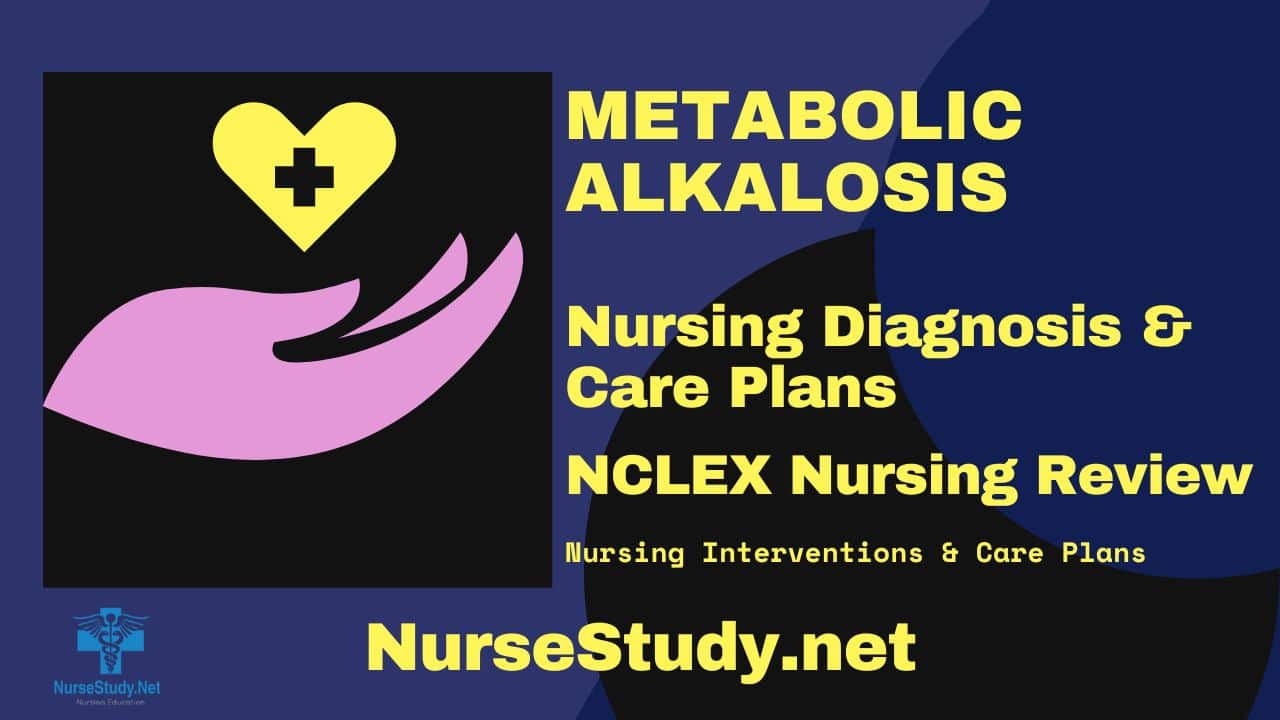Metabolic alkalosis is a critical acid-base imbalance that requires careful nursing assessment and intervention. This comprehensive guide explores the essential nursing diagnoses, interventions, and care plans for effective patient management. Understanding these elements is crucial for providing optimal care to patients experiencing metabolic alkalosis.
Understanding Metabolic Alkalosis
Metabolic alkalosis occurs when the body’s pH rises above 7.45 due to excessive base accumulation or acid loss. This condition can result from various factors, including severe vomiting, diuretic use, or kidney dysfunction. Nurses play a vital role in identifying and managing this condition through carefully assessing and implementing appropriate nursing interventions.
Key Clinical Manifestations
The clinical presentation of metabolic alkalosis typically includes:
- Neurological symptoms (confusion, lethargy, seizures)
- Cardiovascular changes (arrhythmias, hypotension)
- Musculoskeletal symptoms (muscle weakness, tetany)
- Respiratory changes (hypoventilation)
- Gastrointestinal disturbances (nausea, vomiting)
Nursing Assessment for Metabolic Alkalosis
Subjective Data Collection
- Patient history of vomiting or diarrhea
- Use of diuretics or antacids
- Dietary habits, including excessive licorice consumption
- Recent surgical procedures
- Existing medical conditions
Objective Data Collection
- Vital signs monitoring
- Physical examination findings
- Laboratory values (ABGs, electrolytes)
- Neurological status assessment
- Cardiovascular assessment
- Volume status evaluation
Essential Nursing Care Plans for Metabolic Alkalosis
1. Impaired Gas Exchange
Nursing Diagnosis Statement:
Impaired Gas Exchange related to acid-base imbalance as evidenced by hypoventilation, decreased oxygen saturation, and altered mental status.
Related Factors/Causes:
- Acid-base imbalance
- Respiratory compensation
- Altered oxygen delivery
- Changes in alveolar ventilation
Nursing Interventions and Rationales:
- Monitor respiratory rate and depth
Rationale: Helps identify respiratory compensation and potential complications - Assess oxygen saturation continuously
Rationale: Enables early detection of respiratory compromise - Position patient appropriately
Rationale: Optimizes ventilation and oxygenation - Monitor ABG results
Rationale: Provides direct measurement of acid-base status
Desired Outcomes:
- Patient maintains oxygen saturation >95%
- Demonstrates normal respiratory rate and depth
- Shows improved mental status
- Maintains pH within the normal range (7.35-7.45)
2. Risk for Decreased Cardiac Output
Nursing Diagnosis Statement:
Risk for Decreased Cardiac Output related to electrolyte imbalances and acid-base disturbance.
Related Factors/Causes:
- Electrolyte imbalances
- Acid-base disturbances
- Fluid volume changes
- Medication side effects
Nursing Interventions and Rationales:
- Monitor cardiac rhythm continuously
Rationale: Enables early detection of arrhythmias - Assess peripheral pulses and perfusion
Rationale: Indicates adequacy of cardiac output - Administer prescribed medications
Rationale: Helps correct underlying electrolyte imbalances - Monitor fluid status
Rationale: Prevents complications from volume overload or deficit
Desired Outcomes:
- Maintains stable cardiac rhythm
- Shows adequate peripheral perfusion
- Demonstrates stable blood pressure
- Maintains appropriate fluid balance
3. Risk for Injury
Nursing Diagnosis Statement:
Risk for Injury related to neuromuscular changes and altered mental status.
Related Factors/Causes:
- Confusion
- Muscle weakness
- Tetany
- Seizure potential
- Altered consciousness
Nursing Interventions and Rationales:
- Implement safety precautions
Rationale: Prevents falls and injury - Monitor neurological status
Rationale: Enables early detection of deterioration - Maintain seizure precautions
Rationale: Ensures patient safety if seizures occur - Assist with mobility as needed
Rationale: Prevents falls due to muscle weakness
Desired Outcomes:
- Remains free from injury
- Maintains safe environment
- Demonstrates improved muscle strength
- Shows normal neurological status
4. Fluid Volume Deficit
Nursing Diagnosis Statement:
Fluid Volume Deficit related to gastrointestinal losses and diuretic therapy.
Related Factors/Causes:
- Excessive vomiting
- Diuretic therapy
- Decreased oral intake
- Gastrointestinal losses
Nursing Interventions and Rationales:
- Monitor intake and output
Rationale: Ensures adequate fluid balance - Assess skin turgor and mucous membranes
Rationale: Indicates hydration status - Administer IV fluids as prescribed
Rationale: Corrects fluid deficit - Monitor electrolyte levels
Rationale: Guides replacement therapy
Desired Outcomes:
- Maintains adequate hydration
- Shows normal skin turgor
- Demonstrates stable vital signs
- Maintains appropriate urine output
5. Knowledge Deficit
Nursing Diagnosis Statement:
Knowledge Deficit related to lack of information about metabolic alkalosis management.
Related Factors/Causes:
- Limited exposure to information
- Misunderstanding of condition
- Complex medical terminology
- Language barriers
Nursing Interventions and Rationales:
- Provide education about the condition
Rationale: Increases understanding and compliance - Teach medication management
Rationale: Ensures proper medication use - Demonstrate monitoring techniques
Rationale: Enables self-monitoring at home - Provide written materials
Rationale: Reinforces verbal instruction
Desired Outcomes:
- Demonstrates understanding of the condition
- Shows proper medication management
- Identifies warning signs
- Verbalizes when to seek medical attention
Prevention and Long-term Management
Successful management of metabolic alkalosis requires ongoing assessment and intervention. Nurses should focus on:
- Regular monitoring of vital signs and symptoms
- Proper medication administration
- Patient education
- Prevention of complications
- Early intervention when problems arise
References
- Ackley, B. J., Ladwig, G. B., Makic, M. B., Martinez-Kratz, M. R., & Zanotti, M. (2023). Nursing diagnoses handbook: An evidence-based guide to planning care. St. Louis, MO: Elsevier.
- Coffman J. Acid:base balance. Vet Med Small Anim Clin. 1980 Mar;75(3):489-98. PMID: 6769197.
- Harding, M. M., Kwong, J., & Hagler, D. (2022). Lewis’s Medical-Surgical Nursing: Assessment and Management of Clinical Problems, Single Volume. Elsevier.
- Herdman, T. H., Kamitsuru, S., & Lopes, C. (2024). NANDA International Nursing Diagnoses – Definitions and Classification, 2024-2026.
- Ignatavicius, D. D., Rebar, C., & Heimgartner, N. M. (2023). Medical-Surgical Nursing: Concepts for Clinical Judgment and Collaborative Care. Elsevier.
- Makoff D. Compensatory patterns in acid-base disorders. Geriatrics. 1971 Oct;26(10):107-18. PMID: 5099239.
- Schürmeyer E. Blutgasanalysen und Beurteilung des Säure-Basen-Haushaltes [Blood gas analysis and evaluation of the acid-base-balance]. Munch Med Wochenschr. 1968 Dec 13;110(50):2938-42. German. PMID: 5756335.
- Silvestri, L. A. (2023). Saunders comprehensive review for the NCLEX-RN examination. St. Louis, MO: Elsevier.
